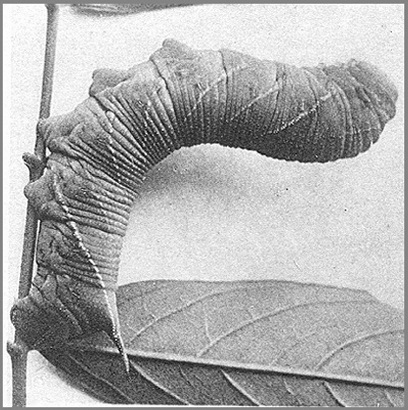

Basiana bilineata Walker, 1866, List Specimens lepid. Insects Colln Br. Mus. 35: 1857. Type locality: [India, West Bengal,] Darjeeling.
Synonym. Basiana bilineata Walker, 1866.
Note. Up until recently, three poorly differentiated subspecies were recognized; these have now been synonymized (see below). The more heavily marked Clanis bilineata tsingtauica Mell, 1922, occurs in Japan and northern China as far south as Shaanxi and Zhejiang. The more lightly marked nominotypical subspecies, Clanis bilineata bilineata (Walker, 1856), has been recorded from Sichuan and Guangdong, from where it extends west to Nepal and south to southern India, Thailand and Vietnam. The status of the intervening Chinese populations from Hubei, Hunan, Jiangxi and Fujian remain to be ascertained (Pittaway and Kitching, 2000). The population on Taiwan is Clanis bilineata formosana Gehlen, 1941 (Lin, 1989).
Note. As this is quite a variable species with regard to wing patterning and DNA barcodes, with these having no apparent habitus or geographical correlation, Eitschberger, 2004, Neue ent. Nachr. 58: 79-80 synonymized all subspecies with the nominotypical subspecies.
Wingspan: 94--150mm. Mid- and hind tibiae white above; the latter in male as long as in female -- 2 mm longer than first tarsal segment. Tibial spurs very unequal, short one less than half the length of the long ones, these not quite half the length of first tarsal segment. Forewing underside with black streak behind cell, hinder margin in male about as long as in female -- 4 to 6 mm longer than distal margin; the pale costal area on forewing above distinct (Bell & Scott, 1937). Dry season/region forms are redder, paler and less well marked than wet season/region forms.


This species does not normally fly until well after midnight, often only in the few hours before dawn.
China: iv-x (Hong Kong); vi (Guangxi; Jiangxi); vii (Guangdong; Guizhou); viii (Fujian).
Kendrick (2002) states that it is multivoltine in Hong Kong, occurring from late February until October, with peaks in April, late July-early August, and mid September.
OVUM: Pale grass-green, oval (2.3 x 1.8mm), smooth and shiny (Bell & Scott, 1937).
LARVA: Full-fed 85--100mm; width 15mm.; horn 6mm. In the final instar, head large and heavy, semi-elliptical in shape, vertex rounded, true clypeus small; apex acute, basal angles, rounded and tumid. Labrum over half length of and broader than clypeus; ligula kidney-shaped, the sinus rather narrow. Surface of head moderately shiny, covered with small, low, smooth, rounded tubercles. A line of larger tubercles stretches from the apex of each lobe to the base of the antenna, and there are parallel lines of tubercles on the cheek. Body thick and nearly cylindrical. Horn short but well developed, thick at base, tapering sharply to a blunt point, slightly down-curved. Surface of body dull with a transverse row of small, low tubercles around each secondary ring. There is a dorso-lateral and a subspiracular line of larger tubercles on segments 2 to 4, the latter joining the lower end of the oblique lateral stripe on 5. A line of large tubercles form each oblique stripe, those on 5 and 11 larger and more sharply pointed than the rest, the latter running across 12 to base of horn. Horn covered densely with small tubercles, and with larger tubercles on the anal flap and claspers (Bell & Scott, 1937).
In colour, head glaucous-green, the tubercles yellow. Labrum watery white; ligula pinkish; basal segment of antenna dirty white, other segments brownish. Mandible pinkish, tip blackish; eyes dark brown. Body grass-green with a glaucous tinge and yellow tubercles. Horn green with the tubercles yellow. Spiracles large, flush, parallel-sided, ends broadly rounded, colour yellowish-green.
Full-fed larvae are usually found at the ends of branches 3-6m from the ground. In the resting position the front part of the body is raised from the surface, the head bowed and the true legs bunched together the characteristic position for the whole genus (Bell & Scott, 1937).
[The full life-cycle is described by Eitschberger & Nguyen (2016a) for North Vietnamese material.]


PUPA: 48--57mm.; width 22mm. Colour bright chestnut, bevels of movable segments paler, spiracles and cremaster black. Large, slender and shiny; length from front of pupa to end of wing-cases more than rest of pupa. Frons broadly visible from below; antenna shorter than fore leg; often with a distinct coxal piece. Frons shallowly rugose-corrugate, base of tongue minutely transverse-corrugate; costa and veins of wing obscurely beaded; segment 4 pitted; strong antespiracular ridges on segments 9-11; a very small spiracle visible on segment 5. Cremaster wedge-shaped, upturned, the lower edge of base touching clasper-scars on 14; its surface very rugose and corrugate, excepting the narrow longitudinal ridge at the end, which is smooth and shiny (Bell & Scott, 1937).


Larval hostplants. Recorded on Pongamia pinnata, Millettia atropurpurea and Pterocarpus marsupium from India (Bell & Scott, 1937). In southern China from Mucuna and Pueraria. Historically, the larvae were considered important pests of soyabeans (Glycine max).
Tachinidae: Exorista sorbillans (Wiedemann, 1830).
China: Sichuan (Kangding; Xiaolou; Wolong National Nature Reserve); Chongqing (Fengjie; Tonggu); Yunnan; Guizhou (Jiucai Ling); Hunan; Jiangxi (Le'an); Fujian (Guangze; Longqi Shan); Guangdong (??Fung-Wan; Wanzishan, Deqing; Nanling National Forest Park, 1100m); Hong Kong; Guangxi (Jiajiu Shan, Bamian); Hainan (Sanya, Mt. Jianfengling; Longhushan, Wenchang City).
Southwestern India as an isolated population. Then from Nepal and northern India (Sikkim; Meghalaya) eastwards across southern China and south into Vietnam (Le & Vu, 2024), Laos and northern and central Thailand.

 Return to Sphingidae of the Eastern Palaearctic species list
Return to Sphingidae of the Eastern Palaearctic species list